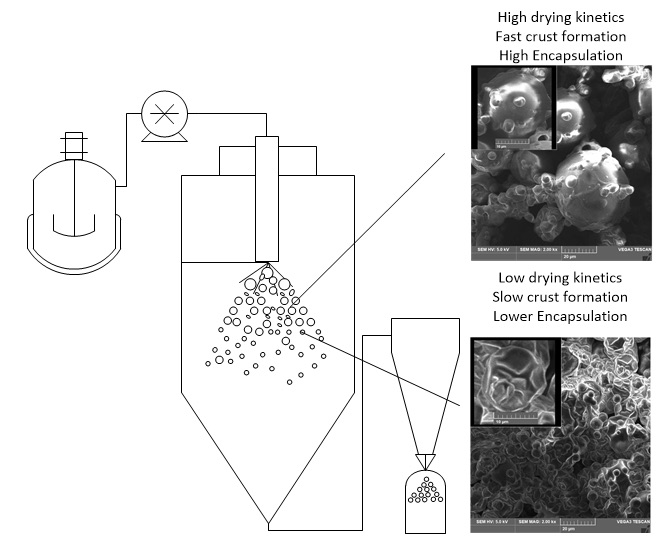Umbu is a tropical fruit with high content of bioactive compounds. However, maturation causes significant losses on nutrient density reducing the nutritional value of this highly appreciated fruit. Thus, the objective of the present work was to encapsulate the Umbu fruit bioactive compounds using spray drying and identify the variables affecting the biomolecules preservation. A Box-Behnken experimental design with 3 factors was set varying inlet temperature, atomization flow rate, and maltodextrin concentration for process otimization. Then the powder physicochemical and chemical properties were characterized, and results were modeled using a polynomial equation. Results revealed that the droplet size and maltodextrin concentration had a significant influence on the conservation of the biomolecules. Drying kinetics favoring fast formation of a particle crust increases encapsulation efficiency. Bioactive compounds retention was achieved by increasing maltodextrin even at high temperatures, where a matrix is formed hindering chemical degradation. Process optimization was validated and revealed low inlet temperatures (122ºC), high atomization flow rate (5kg/h) and high maltodextrin concentration (20%) to be the most desirable conditions for bioactive compounds retention.

